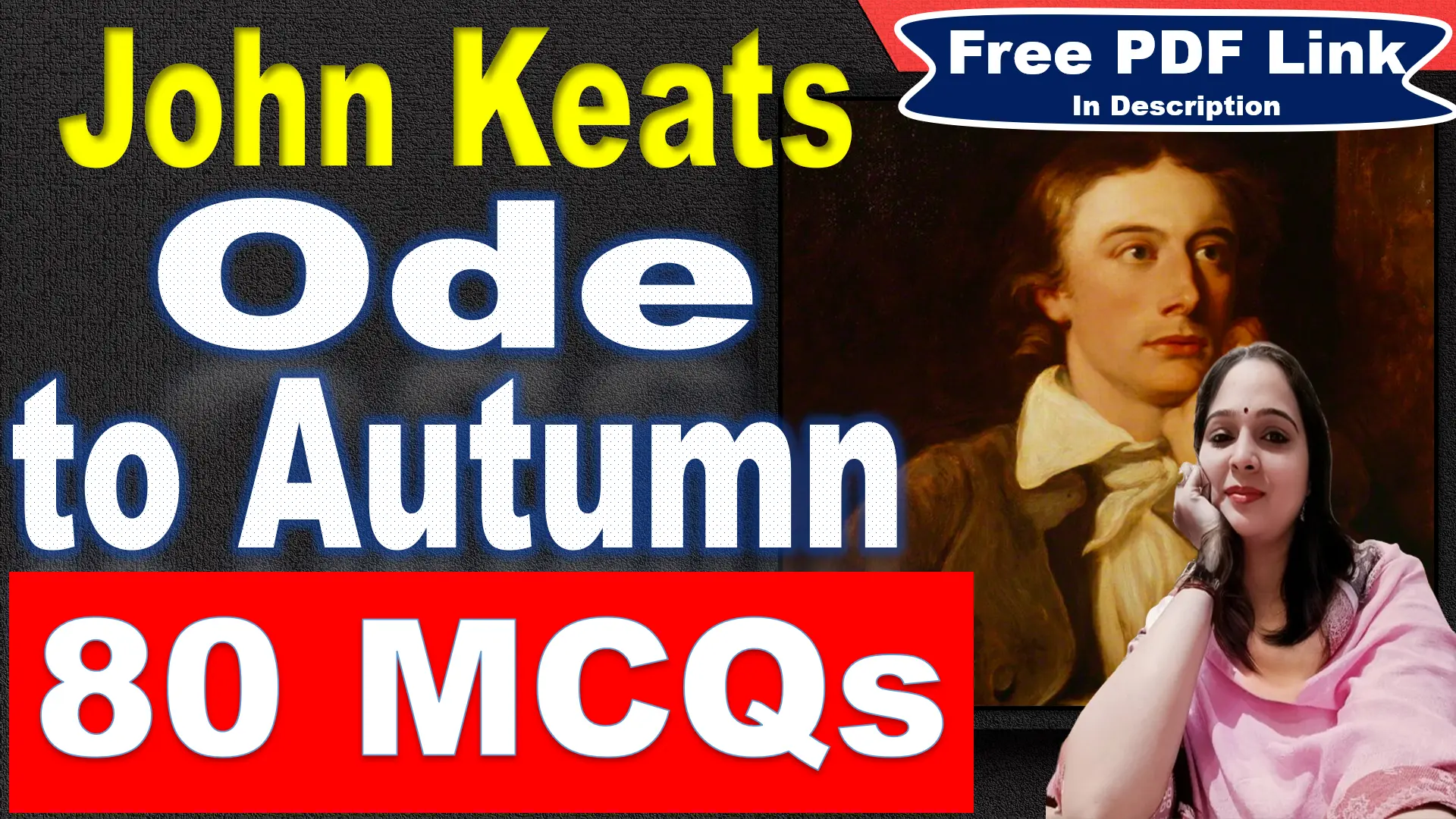
Sonnet 146 by William Shakespeare Questions Answers
Very Short Answer Questions
Who is the author of “Sonnet 146”?
William Shakespeare.
What is the form of “Sonnet 146”?
It is a sonnet.
Who is the speaker in “Sonnet 146”?
The speaker is an individual reflecting on his soul and body.
What is the setting of “Sonnet 146”?
The setting is not specific to a physical location. It’s an introspective exploration of the speaker’s inner self.
What are the main themes of “Sonnet 146”?
The main themes are immortality and sin.
What is the plot of “Sonnet 146”?
The speaker addresses his soul, questioning its focus on earthly pleasures, and urges it to focus on spiritual health.
What is the tone of “Sonnet 146”?
The tone is introspective and admonishing.
What style is used in “Sonnet 146”?
Shakespeare uses metaphor and personification.
What is the message of “Sonnet 146”?
The message is to focus on the soul and spiritual matters to conquer death and achieve immortality.
What is the structure of “Sonnet 146”?
It is an English or Shakespearean sonnet with three quatrains followed by a final rhyming couplet.
What is the rhyme scheme of “Sonnet 146”?
The rhyme scheme is ABAB CDCD EFEF GG.
What meter is used in “Sonnet 146”?
The poem is composed in iambic pentameter.
What is the speaker’s relationship with the Dark Lady in “Sonnet 146”?
The speaker’s relationship with the Dark Lady has taken his focus away from his spiritual health.
What does the speaker try to convince his soul in “Sonnet 146”?
The speaker tries to convince his soul to focus on inward spirituality.
What does the speaker blame his soul for in “Sonnet 146”?
The speaker blames his soul for allowing him to get so off track.
What does the speaker suggest will happen if the soul focuses on inward health in “Sonnet 146”?
The speaker suggests that the soul will “eat Death,” and once dead, “Death” will be unable to take the speaker’s life.
What does the speaker of “Sonnet 146” consider as one of the most important things in life?
The speaker considers love as one of the most important things in life.
What does the speaker of “Sonnet 146” regret?
The speaker regrets his preoccupation with the physical world.
What does the speaker of “Sonnet 146” refer to the body as?
The speaker refers to the body as a “fading mansion”.
What does the speaker of “Sonnet 146” speak to his soul as?
The speaker speaks to his soul as if it were a separate entity.
Short Answer Questions
What is the central conflict of the poem?
The central conflict is between the soul’s desire for spiritual purity and the body’s focus on worldly pleasures and beauty.
What is the body compared to in the poem?
The body is compared to a “sinful earth,” a “fading mansion,” and a “servant” to the soul.
What does the speaker criticize about the way people spend money?
The speaker criticizes people for spending money on “costly gay” decorations and fleeting pleasures instead of focusing on spiritual matters.
What does the speaker suggest the soul do instead?
The speaker suggests that the soul should “pine to aggravate its store” and “buy terms divine in selling hours of dross.” In other words, it should focus on spiritual growth and nourishment instead of worldly pursuits.
What does the speaker mean by “feed on Death”?
By “feed on Death,” the speaker means that the soul can use the inevitability of death as a motivator to pursue spiritual growth and achieve a state of eternal life.
What is the poem’s overall message?
The poem’s overall message is that true happiness and fulfillment can only be found through spiritual growth, not through worldly possessions or pleasures. The soul must prioritize its spiritual needs and embrace the reality of death as an opportunity for transformation.
What literary devices are used in the poem?
The poem uses various literary devices, including metaphors, personification, antithesis, and paradox. These devices help to create a vivid and powerful image of the soul’s struggle and its ultimate triumph over death.
What is the tone of the poem?
The poem’s tone is introspective, contemplative, and ultimately hopeful. The speaker reflects on the nature of life and death, but offers a message of comfort and reassurance in the face of mortality.
How does the poem use the metaphor of the body as a “fading mansion”?
This metaphor emphasizes the impermanence of the body and reminds the reader that it is ultimately just a temporary housing for the soul.
How does the speaker use antithesis in line 12?
The antithesis “Within be fed, without be rich no more” emphasizes the contrast between the soul’s need for spiritual nourishment and the world’s focus on material wealth.
What is the significance of the final line?
The final line, “And, Death once dead, there’s no more dying then,” offers a powerful message of hope and suggests that the soul can achieve a state of eternal life by overcoming the fear of death.
What is the speaker’s attitude towards the body?
While recognizing the body’s limitations and inherent sinfulness, the speaker ultimately acknowledges its role as a temporary vessel for the soul and doesn’t advocate for complete self-denial.
How does the poem relate to Christian beliefs?
The poem reflects Christian beliefs in the inherent sinfulness of the flesh, the importance of spiritual salvation, and the soul’s ability to transcend death through faith.
What are some contemporary interpretations of the poem?
While the poem’s core message remains relevant, contemporary interpretations often emphasize themes of personal growth, self-discovery, and achieving inner peace regardless of religious beliefs.
How does Sonnet 146 compare to other Shakespearean sonnets?
While exploring themes of love, beauty, and mortality, this sonnet stands out for its emphasis on the soul’s journey and its ultimately hopeful message about overcoming death.





